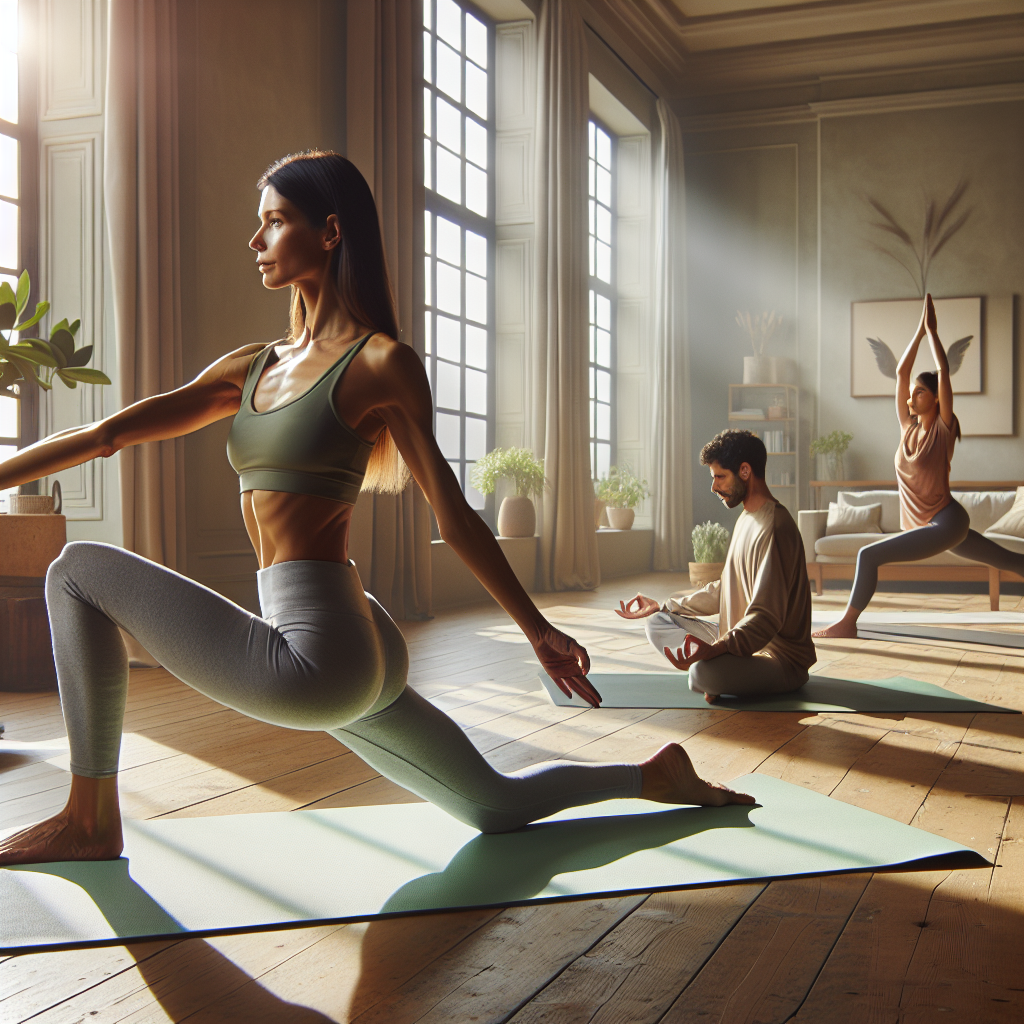
Blog
Yogaaa

### Introduction
Yoga is not just a form of exercise; it is a lifestyle that brings harmony between the mind, body, and spirit. In today’s fast-paced world, where stress and anxiety are commonplace, yoga offers a sanctuary where one can find peace and balance. This blog will explore the profound benefits of yoga, its various styles, and how it can transform your life, all wrapped in a professional tone.
### The Origins and Philosophy of Yoga
Yoga, originally from ancient India, is a practice that has been around for over 5,000 years. Its philosophy is deeply rooted in the pursuit of spiritual enlightenment and self-awareness. The word ‘yoga’ itself means ‘union’, referring to the unity of mind, body, and spirit. Through its eight limbs, yoga provides a comprehensive guide to living a meaningful and purposeful life.
1. **Yamas and Niyamas**: These are the ethical guidelines that act as the moral foundation of yoga. Yamas refer to the universal moral commandments, while Niyamas are personal observances. Together, they guide practitioners towards a life of integrity and self-discipline.
2. **Asanas**: These are the physical postures of yoga, designed to improve flexibility, strength, and balance. Asanas are more than mere exercises; they are an avenue for practitioners to connect with their inner selves and the world around them.
3. **Pranayama**: Often referred to as breath control, Pranayama involves techniques that aid in controlling the vital life force, or ‘prana’. It is believed that by controlling the breath, one can control the mind and emotions, leading to increased focus and clarity.
4. **Meditation and Dhyana**: Meditation is a core component of yoga, aimed at achieving a state of mental clarity and emotional calmness. Dhyana, or meditative absorption, is the practice of focusing the mind on a single point, leading to profound inner silence and stillness.
### The Various Styles of Yoga
Yoga is a versatile practice with numerous styles that cater to different needs and preferences. Each style has its unique characteristics, benefits, and challenges.
– **Hatha Yoga**: This is a gentle form of yoga that focuses on basic postures, making it ideal for beginners. It emphasizes slow and deliberate movements, encouraging practitioners to find peace and relaxation in each pose.
– **Vinyasa Yoga**: Known for its fluid and dynamic movements, Vinyasa Yoga is often referred to as ‘flow yoga’. It synchronizes breath with movement, creating a seamless flow between poses. This style is perfect for those looking for a vigorous and energizing practice.
– **Ashtanga Yoga**: A rigorous and disciplined style, Ashtanga Yoga follows a specific sequence of postures. It is physically demanding and requires a high level of commitment and focus.
– **Bikram Yoga**: Practiced in a heated room, Bikram Yoga consists of a set sequence of 26 poses. The heat is believed to help detoxify the body and increase flexibility.
– **Kundalini Yoga**: This style combines physical postures, breathing exercises, and meditation to awaken the spiritual energy within. It focuses on releasing the energy stored in the base of the spine.
### The Benefits of Practicing Yoga
The benefits of yoga are extensive and well-documented. Regular practice can lead to significant improvements in physical, mental, and emotional well-being.
– **Physical Strength and Flexibility**: Yoga helps build strength and flexibility, enhancing overall physical health. It supports the joints, improves posture, and increases the body’s range of motion.
– **Mental Clarity and Focus**: Yoga is a powerful tool for improving concentration and mental clarity. The practice of meditation and mindfulness helps calm the mind, reduce stress, and promote emotional stability.
– **Stress Reduction**: By promoting relaxation and reducing stress hormones, yoga can help alleviate anxiety and depression. It encourages a mindful approach to life, helping individuals manage stress better.
– **Improved Breathing**: Pranayama enhances lung function and respiratory health, promoting better breathing patterns and increasing oxygen supply to the body.
### Integrating Yoga into Daily Life
Incorporating yoga into your daily routine doesn’t have to be complicated or time-consuming. Here are some tips on how to make yoga a part of your everyday life:
– **Start Small**: Begin with short sessions, gradually increasing the duration as you become more comfortable with the practice.
– **Create a Dedicated Space**: Set up a calm and clutter-free area in your home where you can practice yoga without distractions.
– **Set a Schedule**: Establish a regular time for your yoga practice, whether it’s in the morning to start your day or in the evening to wind down.
– **Listen to Your Body**: Pay attention to your body’s signals and modify poses as needed to avoid injury.
– **Stay Consistent**: Regular practice is key to reaping the full benefits of yoga. Even a few minutes each day can make a significant difference.
### Conclusion
Yoga is a transformative practice that offers a multitude of benefits for the mind, body, and spirit. By embracing yoga, individuals can achieve greater peace, balance, and fulfillment in their lives. As you embark on your yoga journey, remember that the path to self-discovery and enlightenment is a personal and unique experience. May your practice be filled with joy, growth, and inspiration.
